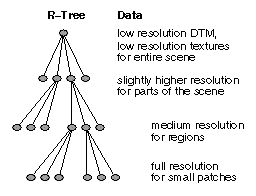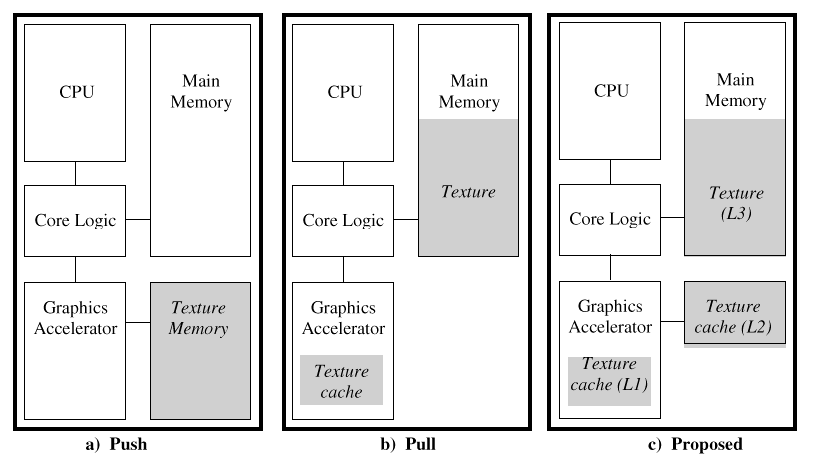
R-trees and resolution levels
Last update, Nov. 2, 1998
Publications on general 3D Visualization issues :
Publications on Texture Mapping issues :
BibTeX references .
Michael Kofler, Michael Gervautz, Michael Gruber
In IEEE Proceedings of Computer
Graphics International '98, Hannover, Germany, June 1998.
Paper available (in PDF format).
With the Styria Flyover you can virtually fly over Styria, a province of Austria. The countryside is characterized by a mixture of rather flat regions in the south east and mountains up to 3000 m in the north west. The digital model covers Styria and parts of its adjoining provinces (30.000 km2); it is based on a DTM consisting of more than 23 million triangles and on 50 Mbyte texture data (satellite images). The framework combines an R-tree data structure with efficient LoD (Level of Details) management (automatic mesh refinement), progressive rendering and dynamic performance adjustment. On a SGI O² it delivers more than 8 frames per second. Our approach demonstrates that efficient algorithms make a fast 3D GIS user interface possible without spending a fortune for hardware. The paper focuses on techniques and data structures to maximize the performance of visualization.

R-trees and resolution levels

Concept of perspective query at multiple LoD.
Michael Cox¹,
Narendra Bhandari² and Michael Shantz²
¹ MRJ/NASA Ames Research Center and Intel Microcomputer Research
Labs
and ² Intel Microcomputer Research Labs
Proc. of 25th International Symposium on Computer Architecture, pp.86-97
IEEE Computer Society, Barcelona, Spain, June 27 - July 1, 1998.
Paper available (in PDF format).
Large fast memories are co-located with the acceleration hardware so that when pixels from the texture (texels) are required, they can be retrieved with low latency and high bandwidth.
Advantage:
Disadvantages:
Textures are stored in system memory and the accelerator pulls texels from system memory to accelerator on-chip[ memory as required. There is no local external memory for texture.
Advantages:
Disadvantage:

L3: identification number/label for any given texture (map).
L2: integer identifying a tile or block of texels.
L1: integer, associated to a parent block L2, denoting a sub-tile (or sub-block) of texels.
Page created & maintained by Frederic Leymarie,
1998.
Comments, suggestions, etc., mail to: leymarie@lems.brown.edu